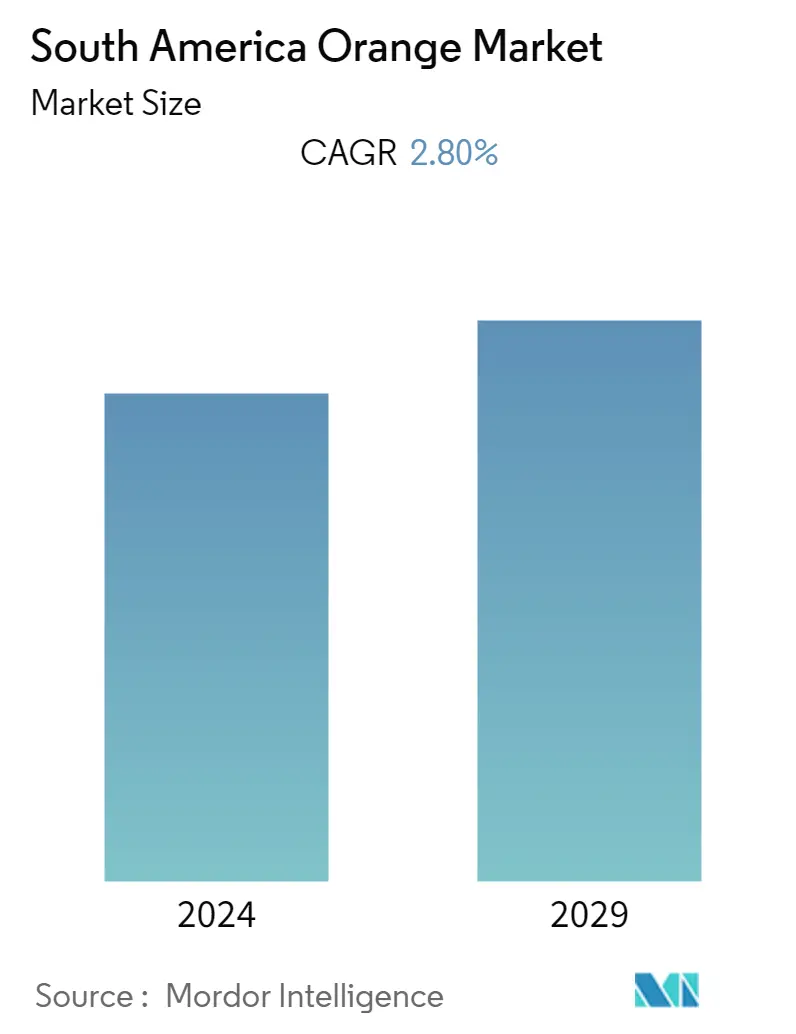Market Size of South America Orange Industry

| Study Period | 2019 - 2029 |
| Base Year For Estimation | 2023 |
| Forecast Data Period | 2024 - 2029 |
| Historical Data Period | 2019 - 2022 |
| CAGR | 2.80 % |
Need a report that reflects how COVID-19 has impacted this market and its growth?
South America Orange Market Analysis
The South America orange market is projected to register a CAGR of 2.8% over the forecast period.
- In South America, oranges are primarily used for juice production and secondarily for direct consumption. Brazil is the world's leading producer, with an 85% production share in South America. Argentina, Columbia, Paraguay, Chile, and Peru are some minor orange-producing countries. South America is also one of the prominent orange trade partners. Brazil, Argentina, and Chile are the leading exporters, whereas Paraguay and Ecuador are the leading importers of oranges.
- According to the United States Department of Agriculture (USDA) report, in the year 2021-2022, fresh orange production was expected to increase to 920,000 metric tons, up 120,000 metric tons from previous estimates. Sweet citrus is grown in Argentina's northwest (oranges) and northeast (oranges and tangerines). The main orange varieties grown in northwest Argentina are Hamlin, Pineapple, Robertson, and Navel, whereas in the northeast, they are Navel, Salustiana, and improved Valencia (Midnight, Delta Seedless). Smaller producers are struggling to compete, and when they exit the business, they tend to sell their orchards to larger farmers.
- There is a new trend of producers switching to more profitable crops, such as "yerba mate," and other activities, such as livestock production. Growers in the northeast tend to produce on smaller plot sizes than those in the northwest.
- Larger orange producers continue to replace unproductive trees and invest in genetic materials to improve yields. These replanted orchards also tend to have higher tree densities. New private-sector investments are primarily concentrating on improving efficiency in processing and packing facilities, irrigation, and research and development projects. Some factory retrofitting is taking place as exporters look to expand cold-chain capacity to meet export market requirements.
- In the past few years, citrus exporters made additional investments to comply with protocols required by new export markets, such as the United States and China, and to meet the European Union (EU) citrus black spot (CBS) requirements to prevent further detections.

